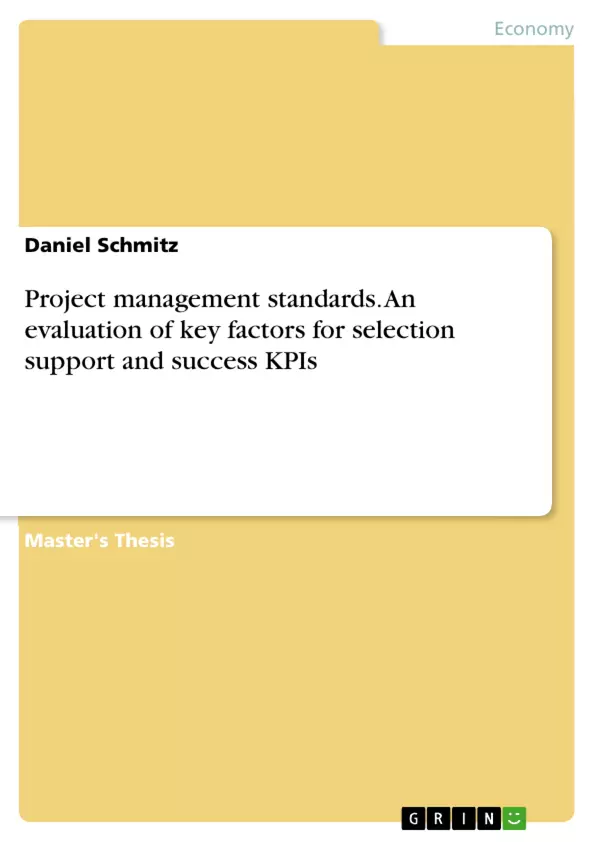The prevalence of information technology (IT) and the significance of its role in modern companies have increased rapidly. Nowadays, almost no business operations unit can work or function efficiently without the support of IT-based systems. Regardless of the general purpose of the respective company and the industry the company operates in, after a given point a functioning IT structure is a prerequisite for a fluent, efficient and successful operation. With an apparently almost infinite variety of IT-supported systems, companies have to deal with the recurring question: Which parts of the company’s IT-based systems possibly require a new implementation, improvement, or replacement?
After a decision regarding a new implementation, an update, improvement or a replacement has been made, an overview must be developed of the tasks that will be needed to reach the project goal. Beyond a certain size and complexity, these IT systems cannot be changed on an ad hoc basis. In such a case, a detailed planning of the approach is an important factor to be coordinated to guarantee that the activities will be carried out on time, within the budget, and at the required level of quality. These tasks are commonly defined within projects, which are preferably coordinated by using project management process models. However, not every process model is equally appropriate for every project or project type.
To make a decision about which process model is to be used, a wide range of aspects of the project have to be considered. These aspects are not only project-specific, but also company-related, which means that not every project can be managed the same way in every company, even if the project-specific aspects are almost identical. Alongside the project-specific factors such as the given time frame, the financial limitations, and the commitment to quality, other company-specific factors have to be taken into consideration. These include not only the amount of HR resources needed, but also the skills of the available project members. But the HR resources are not the only assets that have to be planned. In addition to sufficient staffing, the available software, hardware, and premises must be determined and often booked in advance.
Inhaltsverzeichnis (Table of Contents)
- 1 Introduction
- 1.1 Abstract
- 1.2 Motivation of this Thesis
- 1.3 Objectives of this Thesis
- 1.4 Structure of this Thesis
- 1.5 The example company WALLMEDIEN AG
- 1.6 Typical IT activities in Companies
- 2 Project Management
- 2.1 Projects
- 2.2 Traditional Project Management Methodologies
- 2.2.1 Waterfall Model
- 2.2.2 V-Model
- 2.2.3 Spiral Model
- 2.3 Agile Project Management Methodologies
- 2.3.1 Scrum Model
- 2.3.2 Agile XP (Extreme Programming)
- 2.4 Comparison of Agile and Traditional Methodologies
- 2.4.1 Agile vs. Traditional Project Management Methodologies
- 2.4.2 The combination of agile and traditional projects
- 3 Project Figures and Criteria
- 3.1 Project and Non-Project Distinction
- 3.2 Activity Classification and Project/Non-Project Assignment
- 3.3 Project Classification Criteria
- 3.3.1 Introduction projects
- 3.3.2 Update projects
- 3.3.3 Migration projects
- 3.4 Matching Criteria from Project-Types to Process Methodology
- 3.4.1 Traditional Approaches
- 3.4.1.1 Waterfall-based models
- 3.4.1.2 V-Model approach
- 3.4.1.3 Spiral-Model approach
- 3.4.2 Agile Approaches
- 3.4.2.1 Scrum approach
- 3.4.2.2 Extreme Programming approach
- 3.4.3 Criteria Matching
- 3.4.3.1 Introduction Projects
- 3.4.3.2 Update Projects
- 3.4.3.3 Migration Projects
- 3.5 General Use and Need of Success KPI's
- 3.6 Identification of Success KPIs
- 3.6.1 Cost
- 3.6.2 Time
- 3.6.3 Scope
- 3.6.4 Quality
- 3.7 Success KPIs for Process Methodologies
- 3.7.1 Waterfall
- 3.7.2 V-Model
- 3.7.3 Spiral Model
- 3.7.4 Scrum
- 3.7.5 Agile XP
- 4 Summary
- 4.1 Conclusion
- 4.2 Perspective
Zielsetzung und Themenschwerpunkte (Objectives and Key Themes)
This thesis explores the selection of appropriate project management methodologies for various project types within the context of IT-related projects. It aims to provide a comprehensive framework for evaluating and selecting the most suitable methodology based on specific project characteristics.
- Project Management Methodologies: Traditional (Waterfall, V-Model, Spiral) and Agile (Scrum, Agile XP)
- Project Classification: Introduction, Update, and Migration Projects
- Key Performance Indicators (KPIs) for Project Success
- Matching Criteria for Methodology Selection
- Evaluation of Methodology Effectiveness based on KPIs
Zusammenfassung der Kapitel (Chapter Summaries)
- Chapter 1: Introduction: This chapter establishes the thesis's context, motivation, objectives, and structure. It introduces the example company WALLMEDIEN AG and discusses typical IT activities within companies.
- Chapter 2: Project Management: This chapter provides an overview of project management methodologies, both traditional and agile. It explores the characteristics and applications of different approaches such as Waterfall, V-Model, Spiral, Scrum, and Agile XP.
- Chapter 3: Project Figures and Criteria: This chapter delves into project classification, focusing on identifying the specific characteristics of Introduction, Update, and Migration projects. It outlines criteria for matching project types to appropriate methodologies and explores the role of success KPIs in evaluating project performance.
Schlüsselwörter (Keywords)
This thesis focuses on project management methodologies, particularly traditional and agile approaches, within the context of IT-related projects. Key themes include project classification, success KPIs, criteria matching for methodology selection, and evaluating methodology effectiveness. The study aims to provide a comprehensive framework for selecting the most suitable project management methodology based on project characteristics and anticipated outcomes.
- Quote paper
- Daniel Schmitz (Author), 2015, Project management standards. An evaluation of key factors for selection support and success KPIs, Munich, GRIN Verlag, https://www.grin.com/document/490596



